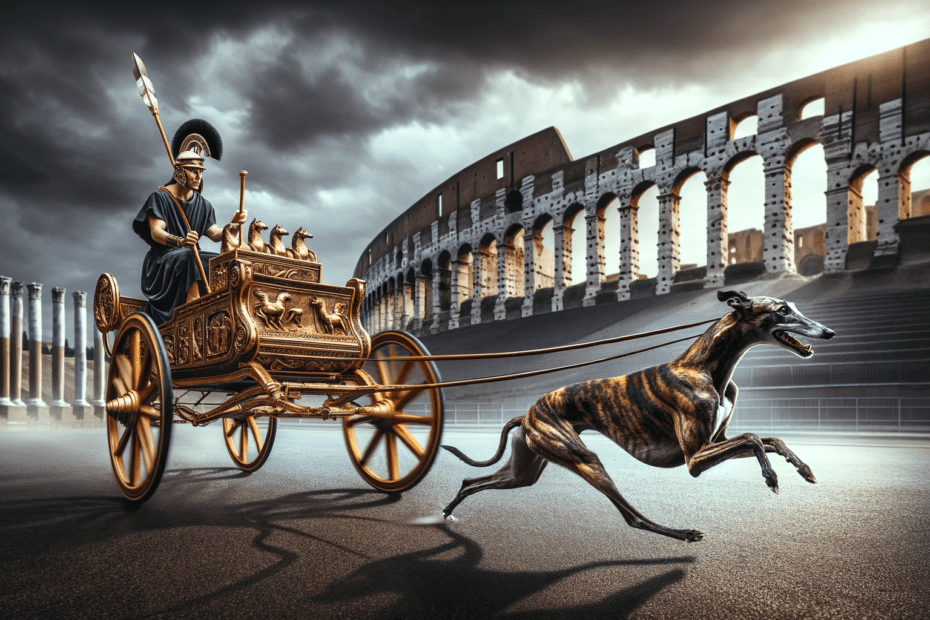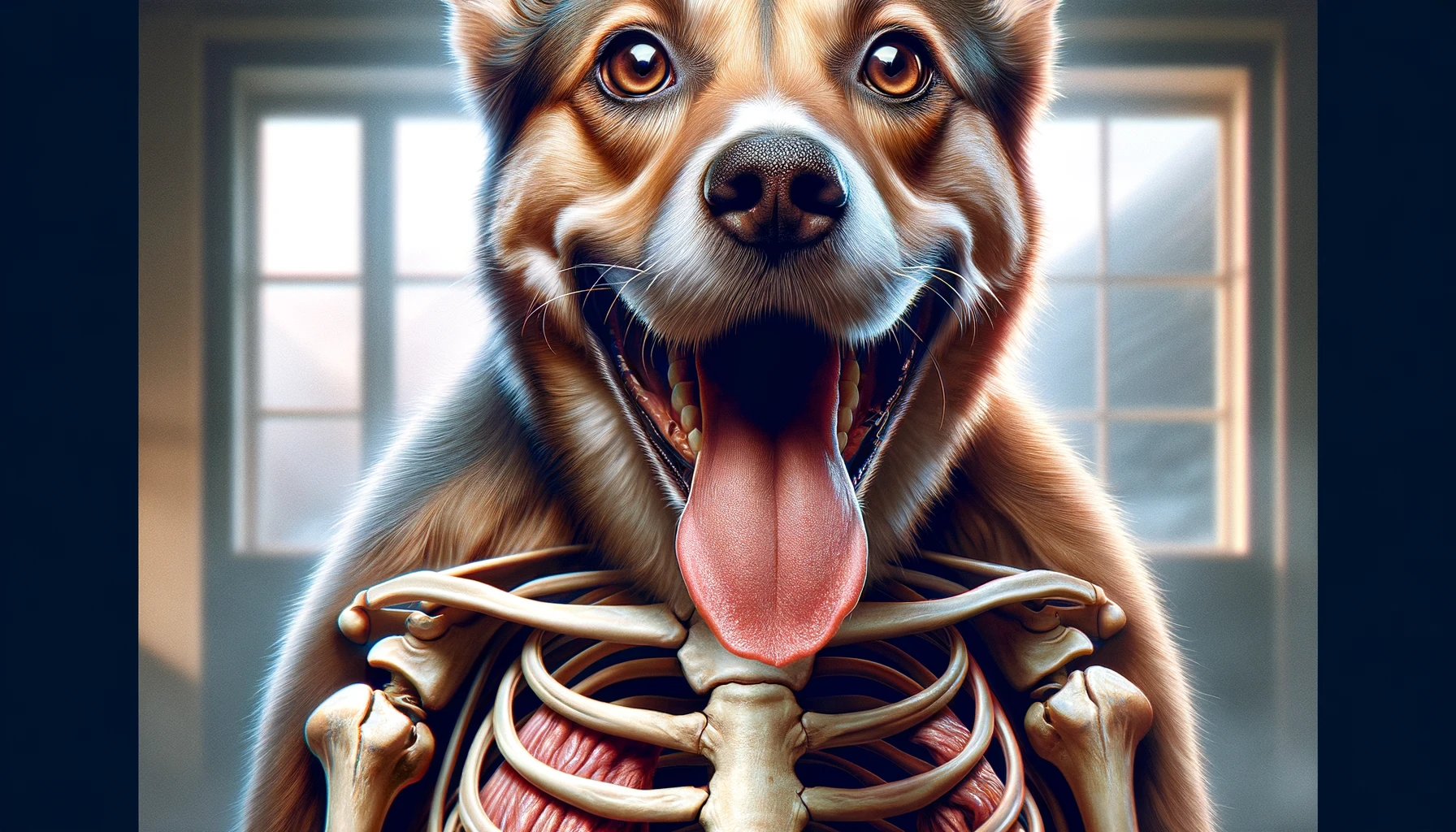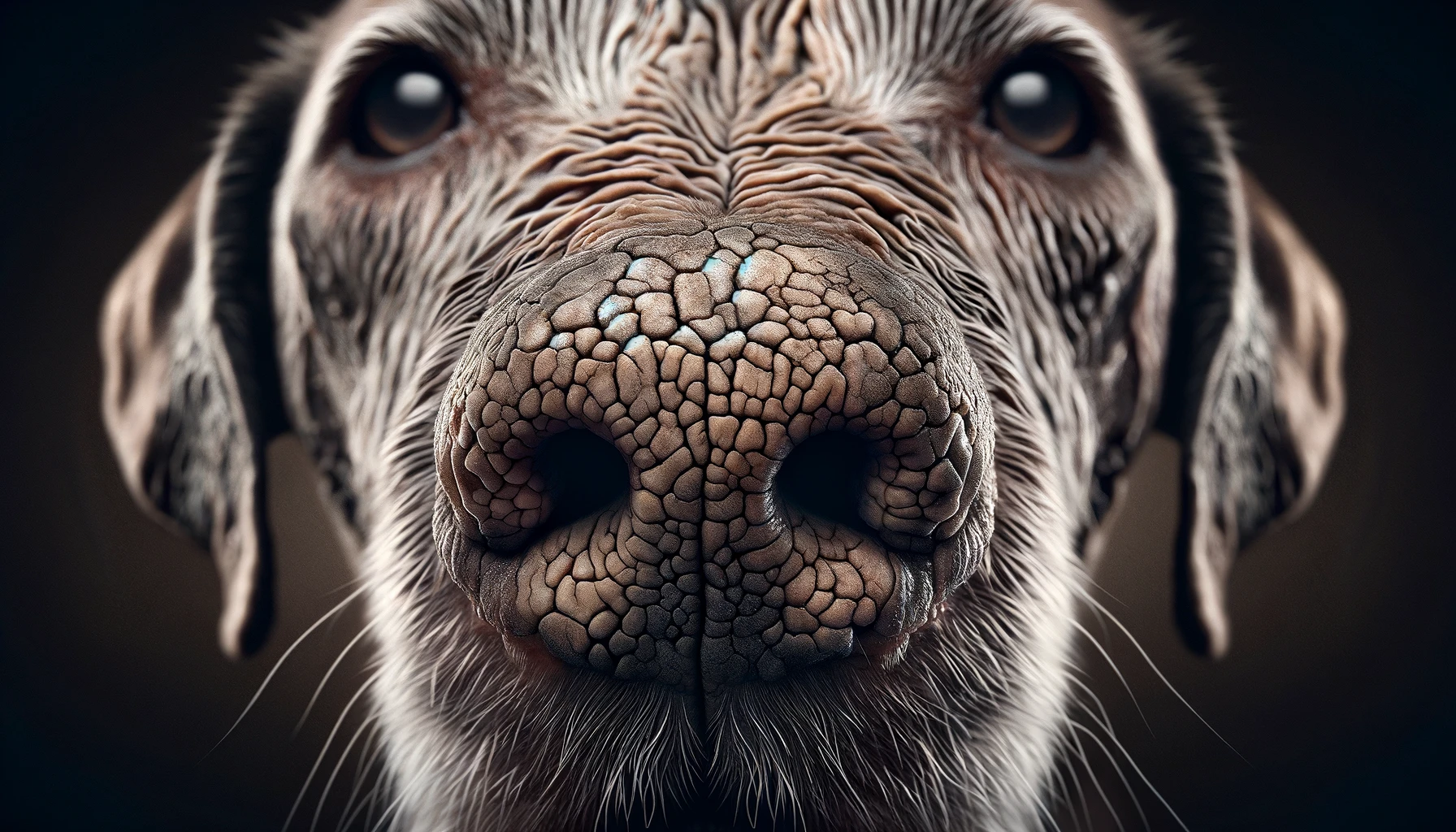In this article, you'll explore the historical significance of canine exercise.
You'll delve into the evolutionary adaptations that have shaped physical activity in dogs, as well as ancient exercise practices and the role of exercise in the domestication process.
You'll also uncover the importance of exercise in ancient civilizations and its impact on working dog breeds.
From historical perspectives to modern sporting events, this article will provide an in-depth analysis of canine exercise throughout the ages.
Key Takeaways
- Canines have evolved with adaptations for speed, agility, strong jaws, sharp teeth, keen senses, and endurance/stamina.
- Ancient canine exercise practices were influenced by rituals and the use of tools, showcasing agility and athleticism.
- Physical activity played a crucial role in shaping the physical and behavioral characteristics of domesticated dogs.
- Exercise is crucial for the physical and mental well-being of working dog breeds.
Evolutionary Adaptations for Physical Activity
You can explore the evolutionary adaptations of canines for physical activity through the lens of their natural instincts and behaviors. Canines have evolved over thousands of years to be highly efficient hunters and survivors in the wild. Their physical adaptations enable them to excel in various forms of physical activity, reflecting their ancient practices.
One of the key evolutionary adaptations of canines is their exceptional speed and agility. Their long, powerful legs and flexible spines allow them to cover vast distances quickly, making them formidable predators. Additionally, their strong jaws and sharp teeth enable them to capture and subdue prey effectively.
Canines also possess keen senses that aid in their physical activity. Their acute sense of smell allows them to track prey over long distances, while their exceptional hearing enables them to detect even the slightest movements. These sensory adaptations contribute to their success in hunting and physical activity.
Furthermore, canines have evolved endurance and stamina to sustain prolonged physical exertion. This adaptation is particularly evident in breeds like the Siberian Husky, which were bred for sled pulling over vast distances. Their efficient cardiovascular systems and efficient energy utilization enable them to perform strenuous activities for extended periods.
Ancient Canine Exercise Practices
Continuing the exploration of canine evolutionary adaptations for physical activity, we now delve into the historical significance of ancient canine exercise practices.
Canine exercise practices in ancient times were influenced by rituals and the use of tools.
- Rituals: Ancient civilizations often incorporated canine exercise practices into their rituals and ceremonies. Dogs were considered sacred and were an integral part of religious and cultural events. These rituals involved various forms of physical activity, including running, jumping, and retrieving objects. Dogs were trained to perform specific tasks during these rituals, showcasing their agility and athleticism.
- Tools: Ancient civilizations also developed tools to aid in canine exercise practices. These tools included leashes, collars, and harnesses, which allowed humans to control and guide dogs during physical activities. Additionally, specialized equipment like hoops, hurdles, and balls were used to enhance the exercise routines of canines. These tools not only facilitated exercise but also helped in training dogs for hunting, herding, and other practical purposes.
The ancient canine exercise practices reveal a deep understanding of the physical and mental needs of dogs. They highlight the close bond between humans and canines throughout history and the importance of physical activity for their overall well-being.
Exercise in Canine Domestication Process
Having explored the historical significance of ancient canine exercise practices, let's now delve into how exercise played a role in the process of domesticating dogs.
The domestication of dogs involved a series of evolutionary changes that were influenced by the physical activity benefits dogs received through exercise.
Physical activity played a crucial role in the domestication process as it helped shape the physical and behavioral characteristics of dogs. Through exercise, dogs were able to develop their endurance, agility, and strength, which ultimately made them more efficient in various tasks required by humans. This selective breeding for traits associated with physical activity contributed to the diversification of dog breeds we see today.
In addition to physical changes, exercise also had an impact on the behavioral aspects of domestication. Dogs that were more active and willing to engage in physical activities were more likely to form close bonds with humans and adapt to their lifestyles. This allowed dogs to become valuable companions and helpers, further solidifying their place in human society.
Canine Exercise in Ancient Civilizations
Exercise in ancient civilizations played a significant role in shaping the physical and behavioral characteristics of canines. Canine exercise techniques in these early societies were influenced by the needs and lifestyles of their human counterparts. Archaeological evidence provides insights into the types of activities that dogs engaged in during this time period.
Some key canine exercise techniques in ancient civilizations include:
- Hunting: Dogs were used as hunting companions, aiding in tracking and capturing prey. They'd engage in activities such as running, chasing, and retrieving.
- Guarding: Dogs were trained to protect homes and livestock, requiring them to be alert and physically fit. They'd patrol the perimeter or accompany shepherds, engaging in activities like walking, jogging, and barking to deter potential threats.
- Herding: Dogs played a crucial role in herding livestock, requiring them to be agile and quick on their feet. They'd engage in activities such as running, circling, and guiding the animals.
Archaeological evidence, such as ancient artwork and artifacts, provides glimpses into the physical activities and interactions between humans and dogs in ancient civilizations. These depictions highlight the important role of exercise in the lives of canines during this time, contributing to their development and overall well-being.
Role of Exercise in Working Dog Breeds
To understand the importance of exercise in working dog breeds, you must recognize the significant role it plays in their physical and mental well-being. Working dog breeds, such as Border Collies and German Shepherds, have evolved specific traits and characteristics that make them well-suited for their respective jobs. These evolutionary adaptations include high energy levels, endurance, and intelligence. Regular exercise allows these dogs to channel their energy in a productive manner, preventing destructive behaviors that can arise from pent-up energy.
Additionally, exercise helps to keep their bodies in optimal condition, promoting cardiovascular health, muscle strength, and joint flexibility. Not only does exercise contribute to the physical well-being of working dog breeds, but it also plays a crucial role in their mental health. These dogs have been bred to perform tasks that require focus, problem-solving, and quick decision-making. Regular exercise provides them with mental stimulation and enrichment, preventing boredom and the development of behavioral problems.
Furthermore, the bond between a working dog and its handler is strengthened through exercise, as they engage in activities that require trust, communication, and teamwork. In conclusion, exercise is essential for the overall well-being of working dog breeds. It allows them to fulfill their natural instincts, maintain optimal physical condition, and promote mental stimulation. By providing regular exercise, owners can ensure that their working dogs lead healthy and fulfilling lives.
Historical Perspectives on Canine Exercise
As you delve into the historical perspectives on canine exercise, consider the various factors that have influenced the ways in which dogs have been physically active throughout the ages. Understanding the evolutionary origins of dogs is essential in comprehending their exercise needs. Canines, as descendants of wolves, were naturally active creatures, built for hunting and survival. Over time, humans domesticated dogs, leading to a shift in their purpose and exercise patterns.
When examining historical records, it becomes evident that canine exercise has been depicted in various forms of art. Paintings, sculptures, and ancient artifacts have showcased dogs engaged in activities such as hunting, herding, and even participating in sporting events. These artistic representations not only provide insights into the physical activities dogs were involved in but also highlight the importance of their exercise in different societies and cultures throughout history.
Furthermore, the historical perspectives on canine exercise also shed light on how dogs were utilized in different roles, such as working dogs, war dogs, and companions. Each of these roles required dogs to engage in specific physical activities, further emphasizing the importance of exercise in their lives. Through an examination of historical records and artistic depictions, we can gain a deeper understanding of how dogs have been physically active throughout history and how these activities have shaped their evolutionary development.
Exercise in Canine Sporting Events
Throughout history, dogs have actively participated in various canine sporting events, showcasing their physical abilities and athleticism. Canine fitness training has become an essential aspect of preparing dogs for these events, ensuring that they're in prime physical condition to compete. Regular exercise not only enhances their physical health but also has numerous benefits for their mental well-being.
Engaging in sporting events allows dogs to channel their energy and focus, which can have a positive impact on their mental health. Exercise helps to reduce stress and anxiety in dogs, as it provides an outlet for their energy and promotes the release of endorphins, which are known to improve mood and overall mental well-being. Additionally, participating in sporting events allows dogs to socialize with other dogs and their handlers, promoting positive social interactions and strengthening their bond with their human companions.
The benefits of exercise for dogs' mental health extend beyond the event itself. Regular physical activity helps to prevent behavioral issues such as boredom, destructive behavior, and excessive barking. Dogs that participate in sporting events are often better behaved and more content overall, as they've an outlet for their natural instincts and energy.
Canine Exercise in Modern Times
In modern times, canine exercise has become increasingly recognized for its numerous health benefits for dogs. Daily exercise is crucial for maintaining a healthy weight, preventing obesity-related diseases, and promoting overall physical and mental well-being.
As more pet owners are becoming aware of the importance of exercise, there's been a rise in exercise trends specifically designed for canines, such as doggy boot camps, agility training, and even canine yoga.
Health Benefits for Dogs
To ensure the overall well-being of your furry companion, it's essential that you prioritize their health by incorporating regular exercise into their daily routine.
Canine exercise plays a crucial role in promoting mental health for dogs. Regular physical activity helps reduce stress, anxiety, and depression in dogs, just as it does in humans. Exercise stimulates the release of endorphins, which are known as the 'feel-good' hormones, leading to improved mood and overall mental well-being.
To facilitate exercise for your dog, there are various exercise equipment options available on the market. From treadmills and agility equipment to interactive toys and puzzle games, these tools can provide mental stimulation and physical activity for your canine friend.
Incorporating these exercise equipment options into your dog's routine can enhance their overall health and happiness.
Importance of Daily Exercise
You can't underestimate the importance of daily exercise for your dog in modern times. While dogs have evolved from their wild ancestors, they still possess many of the same instincts and physiological needs. Regular exercise provides numerous evolutionary benefits for dogs, both mentally and physically.
It helps to prevent obesity, reduces the risk of various health issues, and promotes overall well-being. Exercise recommendations for dogs vary depending on factors such as age, breed, and size. However, as a general guideline, dogs should engage in at least 30 minutes to 2 hours of exercise every day.
This can include activities such as walking, running, playing fetch, or participating in dog sports. Regular exercise not only contributes to a healthier and happier dog but also strengthens the bond between you and your furry companion.
Exercise Trends for Canines
Canine exercise trends in modern times reflect the changing ways in which dogs stay active. As dogs have evolved alongside humans, their exercise habits have also evolved to adapt to our changing lifestyles. Ancient civilizations recognized the importance of exercise for dogs and incorporated it into their daily routines. However, in modern times, the focus has shifted towards providing dogs with more structured exercise opportunities.
Some current exercise trends for canines include:
- Agility training: This involves teaching dogs to navigate through a series of obstacles, which not only provides physical exercise but also mental stimulation.
- Canine sports: Dogs are now participating in various sports such as dock diving, flyball, and disc dog, which not only keep them fit but also strengthen their bond with their owners.
- Interactive toys and puzzles: These toys require dogs to use their problem-solving skills, providing both mental and physical exercise.
Frequently Asked Questions
How Did Ancient Civilizations Incorporate Canine Exercise Into Their Daily Lives?
Ancient civilizations incorporated unique exercise practices for canines in their daily lives. They recognized the importance of physical activity for their dogs and developed various methods to keep them fit and healthy.
What Role Did Exercise Play in the Domestication Process of Canines?
Exercise played a crucial role in the domestication process of canines. It provided evolutionary benefits by promoting physical development, increasing their agility and stamina. Without exercise, canines may not have developed the traits that make them such valuable companions today.
How Has the Perspective on Canine Exercise Changed Over Time?
Over time, perspectives on canine exercise have evolved alongside the development of veterinary practices. The understanding of the link between canine exercise and mental health has grown, highlighting the importance of physical activity for dogs' overall well-being.
What Are Some Unique Exercise Practices Observed in Specific Working Dog Breeds?
Working dog breeds exhibit unique exercise practices such as agility training and scent work. These activities not only promote physical fitness but also enhance their natural instincts and abilities, making them highly skilled and valuable in their respective roles.
How Has Canine Exercise Evolved in Modern Times and What Factors Have Influenced This Change?
In modern times, canine exercise has evolved due to the increasing focus on injury prevention and the influence of canine fitness trends. Factors such as improved knowledge, advanced training techniques, and access to specialized equipment have contributed to this change.
Conclusion
In conclusion, the historical significance of canine exercise can't be understated. From ancient times to modern times, dogs have evolved alongside humans, adapting to the need for physical activity.
Canine exercise practices have played a crucial role in their domestication process and have been a vital aspect of ancient civilizations.
Additionally, exercise has been instrumental in the development of working dog breeds and has become a central part of canine sporting events.
Understanding the historical perspective of canine exercise provides valuable insights into the relationship between humans and dogs.






